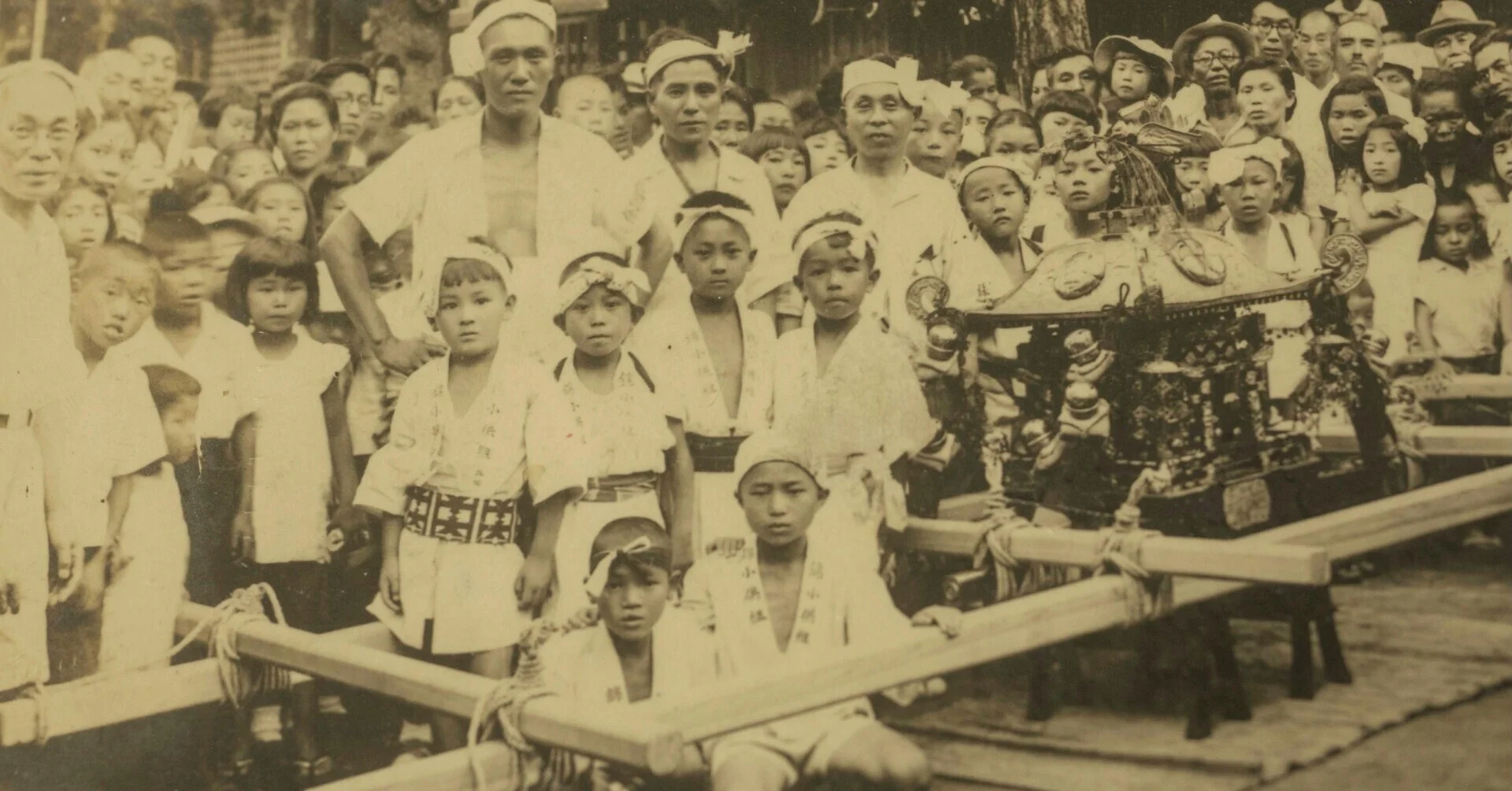
For the first installment of “Tales of Nishiki,” we gathered together people who have been involved in Nishiki Market for many years to talk about the market in the olden days.
hairperson, Kyoto Nishiki Market Shopping Center Promotion Association
Mr. Katsumi Utsu, Chairperson of the Board, Masugo Co.
Supervisor, Kyoto Nishiki Market Shopping Center Promotion Association Mr. Takashi Kuwayama, President & CEO, Kuwatou Co.
Former Deputy Chairperson, Kyoto Nishiki Market Shopping Street Promotion
Association Mr. Yuji Shimamoto, Shimamoto Nori Dry Provisions Co.
Chief Director, Kyoto Nishiki Market Shopping Street Promotion Association
Mr. Tomisao Mita, Representative Director, Notoyo Ltd.
The times they spoke about were mainly around seventy-five years ago, the period immediately following the Pacific War.
In the more than 400-year history of Nishiki Market, this may be a very recent event. Still, it is a valuable story that should be passed down to future generations, especially as the number of people who knew the Nishiki Market in those days is gradually dwindling.
Chairperson Utsu, now 83, was in the first grade of elementary school when the war ended. He had just returned from an evacuation.
Mr. Shimamoto is two years older than Chairperson Utsu. They went to the same elementary school and junior high school. Chairperson Mita is 80 years old, a little younger than both of them. He was born the year before the Pacific War began.
Mr. Kuwayama is the youngest of the group at 69 years old. He is the only one belonging to a generation that has never known war.
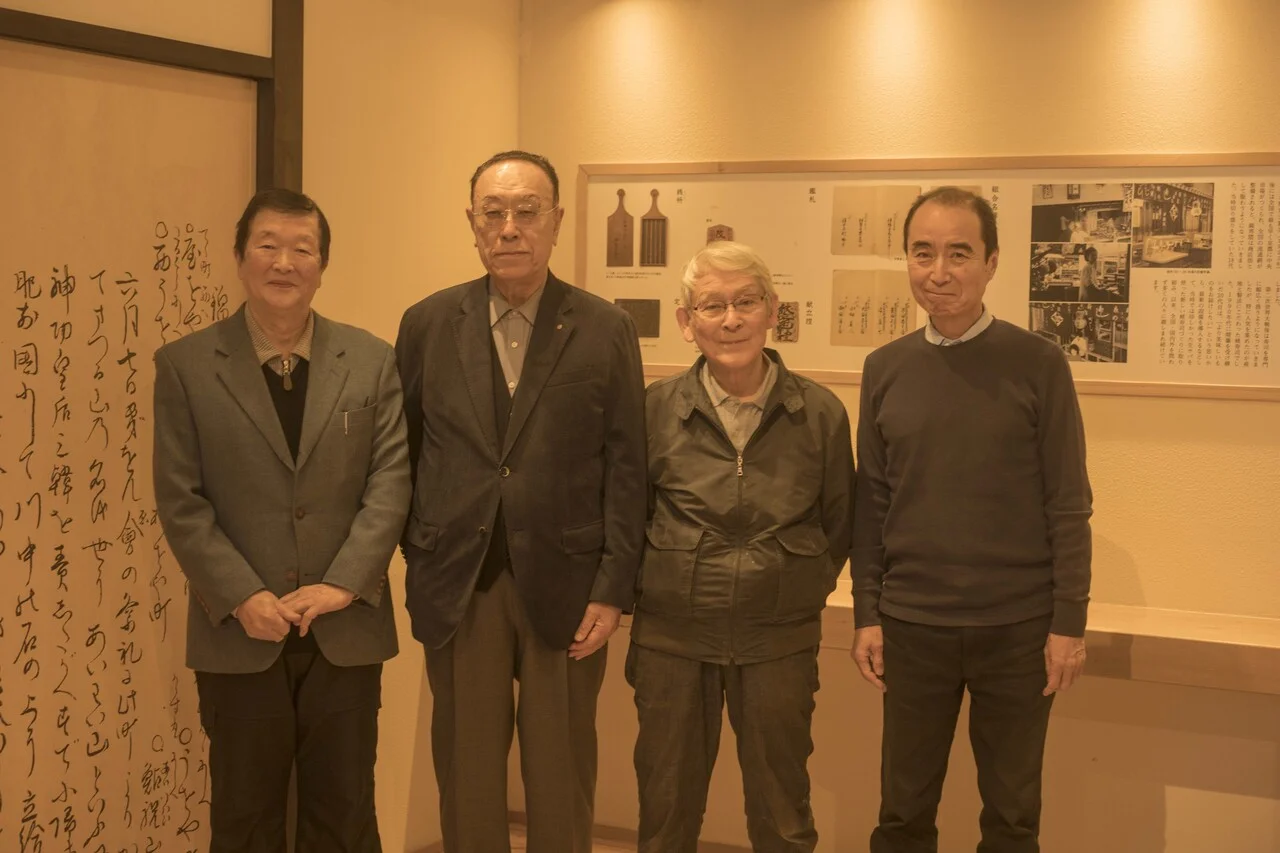
For the four, the “old Nishiki Market” means the market in the years following the war. Neither Mr. Shimamoto nor Mr. Utsu, the eldest two of the four, remember the Nishiki Market during the war, as they were living at an evacuation destination.
Only Chancellor Mita, who was still in kindergarten at the time, was not evacuated from the city and remembers training to pick up and throw incendiary bombs while firing a smoke bomb.
According to a record (Kinseikai centennial commemorative magazine Nishiki no Hyakunen), after the Pacific War broke out, the agreed price of goods, the official price system, and the rationing system resulted in a situation where commerce itself did not exist throughout Japan, and Nishiki Market remained in a state where shops were open but had practically no business for more than ten years.
When people returned from evacuation after the war, the scenery of Nishiki Market had completely changed. The elder two commented back and forth about their memories of chewing gum.
“A foreigner was walking around with a Japanese woman, just like you see in movies depicting the end of the war. I was so happy to receive chocolates and chewing gum from the woman.” “Japanese chewing gum shredded quickly, but foreign chewing gum could be chewed forever and was delicious.” “It was a waste to throw it away, so I wrapped it in paper and chewed it again.” “I chewed it for about a week.”
“When they were taken away by the authorities, the market association’s officials went to have them released.”
The postwar chaos led to black markets mushrooming across Japan, attracting huge numbers of people in search of daily necessities.
The black market economy soon hit the Nishiki market as well. At that time, Nishiki Market had direct dealings with producers, which made it easy to obtain goods. Goods came from all over the country and were sold here.
“When we put our merchandise on display in the stores, people lined up to buy them, and they sold like hotcakes.”
It was a situation where “anything that could be put in the mouth was good enough.” “Anything that could be put in the mouth sold.”
“A lot of food was supplied to Nishiki Market, thanks to connections with producers. However, the authorities would come suspecting that our merchandise was illegally obtained.” “When they arrested merchants, the market association’s officials at the time went and bowed down to have them released.”
“Goods would come from across the country, and the area around Tominokoji would become crowded. There were even illegally obtained refrigerators for sale.” “When goods came to the market, people would scramble to get them. Eventually the stores increased.” “Many dangerous tekiya gangs were also involved, and the market association’s officials of the time went through a lot of danger to drive them out. They managed to make them leave Teramachi and go to Shinkyogoku. The newspaper of the time carried an article about it.”
“There was a time when the Nishiki Market was mistaken for a black market as a result of the GHQ (General Headquarters Supreme Commander for the Allied Powers) black market elimination policy.” “The Nishiki Market was nearly closed down, but the market association’s officials petitioned repeatedly for its continuation, explaining the history and value of Nishiki Market, and the market was allowed to continue.”
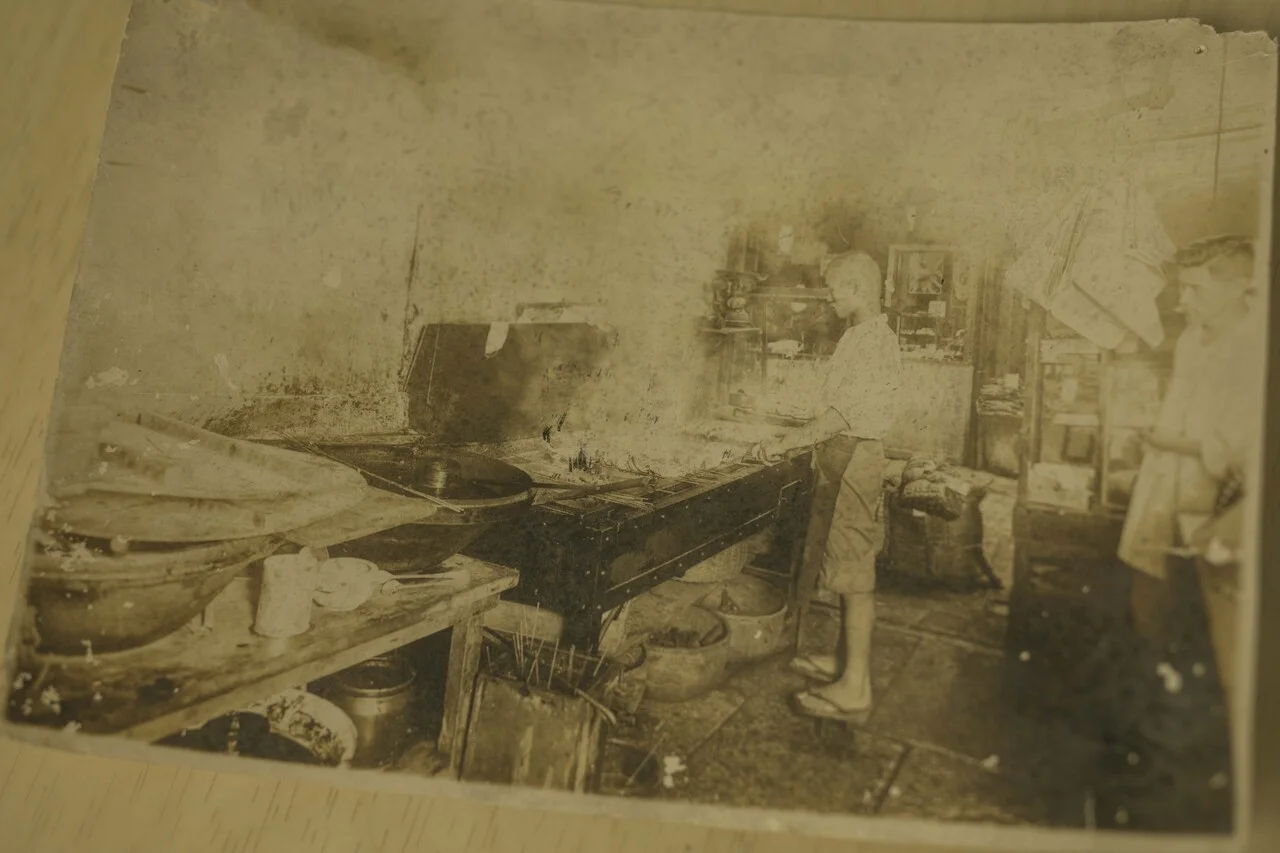

“Our relationship with the producers helped us get through the turmoil.”
The four shared the following stories about the period around the war.
Chairperson Utsu: “During the war, the central wholesale market was closed due to the controlled economy, so we formed a company called “Sampou” (the Chinese characters are unknown) to purchase products and deliver them to military factories and other places in Kyoto.
Director Mita: “We would receive basket clams and live fish, which we sold at the controlled market place.” (“controlled-price market place”?)
Mr. Shimamoto: “I hate to say it, but it was a time when the best was the one who got the most. We (Nishiki Market) had goods from all over the country, so we were able to make a profit.”
Mr. Kuramatsuyama: “In older days, fish used to be brought by boats to a landing place along Katsuragawa River. The fish were then carried into the city on carts. A monument to the fish market still stands today. By the way, when the railroad was built and boats became obsolete, that was when my ancestors came to Nishiki Market. This was at the end of the Meiji era. I heard that during the war, our store was a kind of representative of the fishmongers, so all the fish came to us and we filleted them and distributed them. The fish that came to Nishiki Market were often brought by ‘katsugi,’ who were peddlers from Awaji Island and other places. They opened stalls around Watahan-san and sold the fish. They had a sort of a consignment system with the wholesaler.”
Looking back on that era, the four elder members of Nishiki Market agreed that Nishiki Market prospered because many of the stores were receiving their goods directly from the producers and the goods kept coming in, and that thanks to this, the market was able to overcome the chaos of the end of the war.
The tradition of valuing suppliers and being particular about the goods’ places of origin is still alive and well in Nishiki Market.
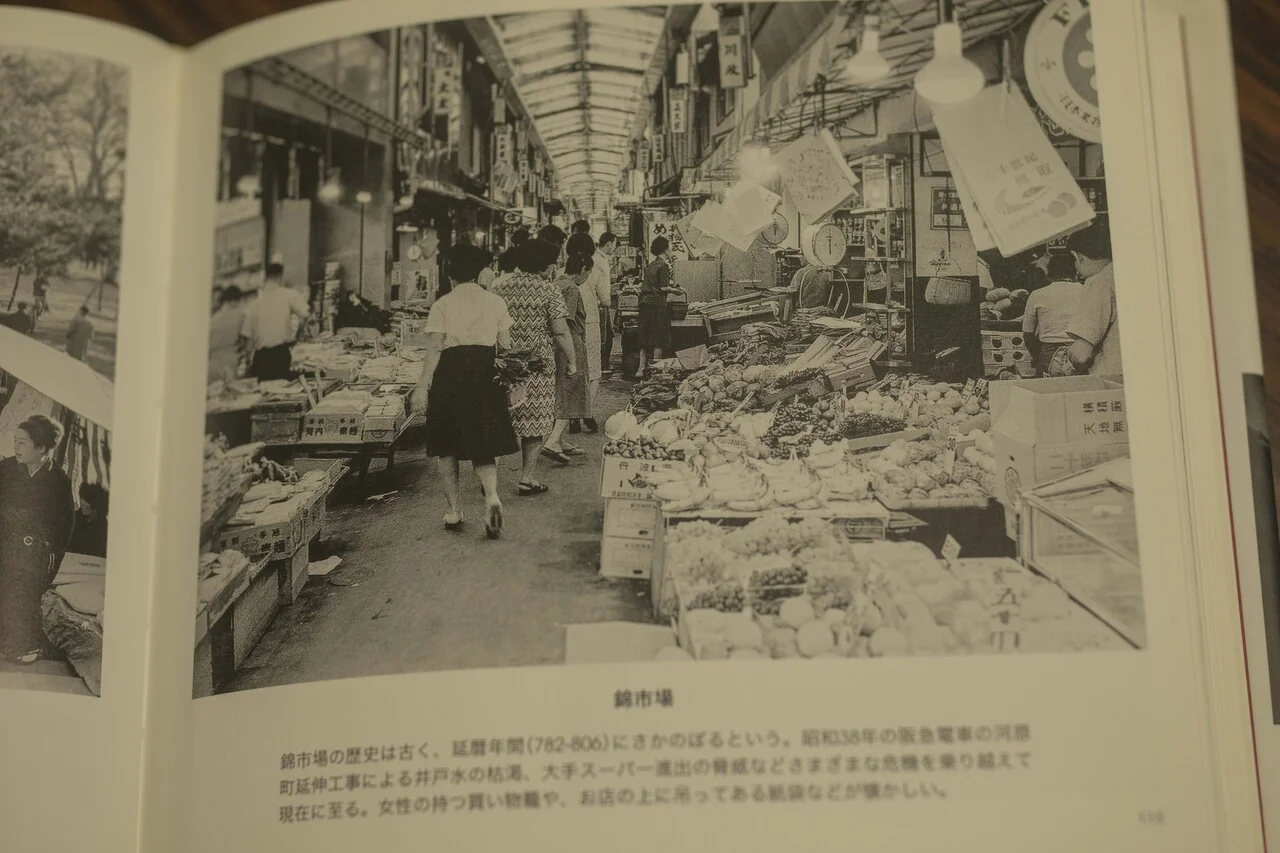
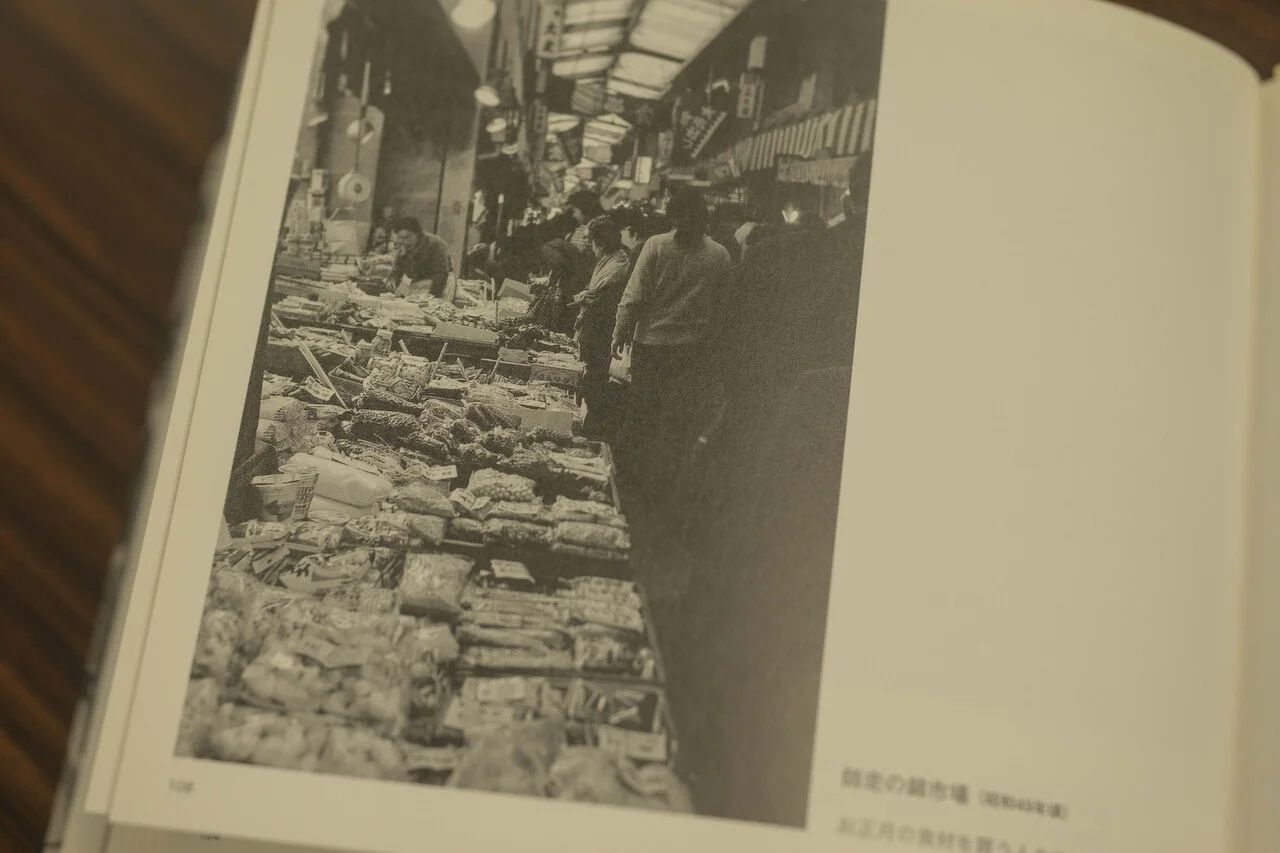
“It is not enough to imitate what is done elsewhere.”
The Nishiki Market, which regained its vitality, has since rolled out a variety of projects.
The Nishiki Market, which regained its vitality, has since rolled out a variety of projects. Among the events that will remain in everyone’s memories as groundbreaking were the “Paris Collection Fashion Show,” the “Sake Festival,” and the “Nabe Festival.”
The fashion show by two designers, carried out with chairs placed on both sides of Nishiki Koji Street and using lights to create an impressive atmosphere in a pitch-dark market,
attracted a large audience and was reported on various media.
The “Sake Festival” was popular because forty sake breweries opened stalls in Nishiki Market and the market’s stores made and sold sake entrées.
The “Nabe Festival” was an initiative of the youth division of Nishiki Market. They invited well-known restaurants of Western and Japanese cuisine to cook and sell unique foods using a large pot. The four elder members of Nishiki Market praised this event regarding the fact that the famous restaurants were limited to those that stocked at Nishiki Market, and that the event was held after the market closed at night (a development from the traditional night market).
Other than these events, there is the arcade project. Originally, Nishiki Market was a simple “arcade” street protected from sunlight and rain by reed screens and tent sheets.
Since the shopping district in Teramachi had built a splendid arcade roof earlier, members of Nishiki Market asked members of the Teramachi shopping district to give them some advice. The main issue was how to get preliminary approval from the government, and the Teramachi people said that the fastest way to make it happen was to talk to the fire department.
As for the arcade roof’s design, Nishiki Market came up with its own original one.
The idea was not to copy what was being done elsewhere, but to create something original, something unconventional, something that had a story to tell, and something that would be talked about. As a result, the present arcade roof with fancy stained glass in three primary colors was designed.
These three colors are now the symbolic colors of Nishiki Market. They create an original atmosphere that visitors often photograph and upload on Instagram.
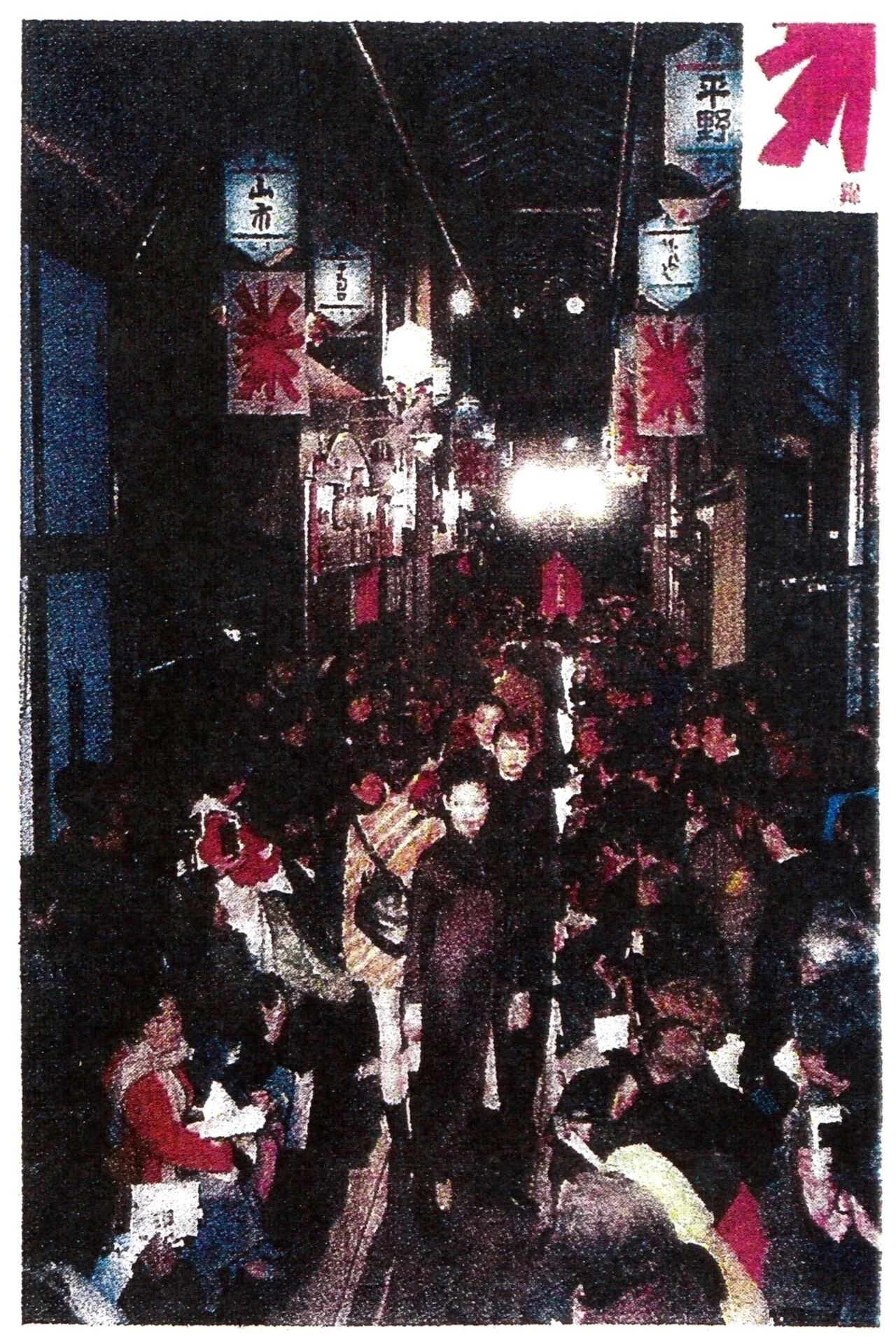
According to Chairperson Utsu, “In hindsight, the arcade project was a spur-of-the-moment thing.
(Laughter.)”
The four elder members of Nishiki Market gave the following comments as they agreed with one another.
“We’re carrying out a lot of things now, but it’s important that we continue to do them in the future.”
“We want the next generation to continue this tradition of carrying on.”
“The reason we have been able to think and carry out things together this well is probably because we have built solidarity by carrying the mikoshi together during the Gion Festival.”
“We published a commemorative magazine celebrating the 40th anniversary of the Nishiki Market Promotion Association, believing that records and memories would be lost if we did not do so.
We see the same enthusiasm and passion in the way that the young members of Nishiki Market are now working on these “Tales of Nishiki.”
Please stay tuned to the “Tales of Nishiki” project to see what other stories will emerge and be told to people of the present age.
(Date of interview: December 17, 2020)


